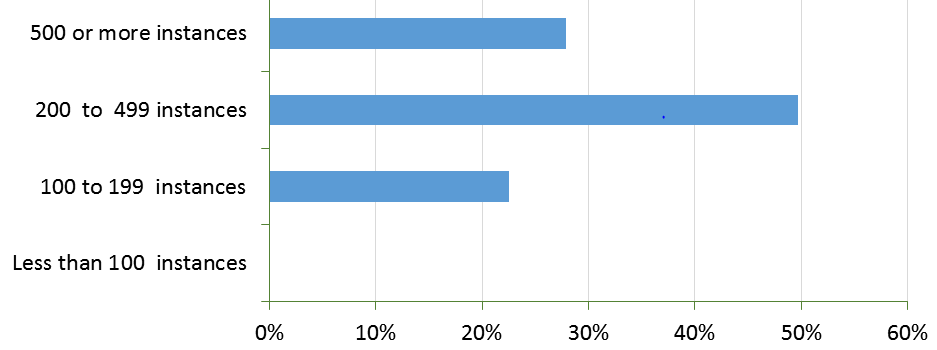Database as a Service (DBaaS) is becoming another one of those industry buzzwords that can mean almost anything. Obviously it has something to do with running databases in a cloud model. But technology vendors don’t hesitate to apply that term to any product that’s even remotely related to that topic. Database software? Yep, that’s DBaaS. Storage arrays for your database? That’s DBaaS too. A coffee machine? Probably!
For a serious discussion about DBaaS, it’s useful to look at the state of databases today. Data is the foundation on which modern businesses are built, and much of it lives in commonly used databases such as Oracle Database or Microsoft SQL Server. Database sprawl and the resultant explosive growth of database copies represent an enormous challenge for enterprise IT teams. In an IDC survey, 77% of enterprise IT decision makers said they have more than 200 instances of Oracle Databases or Microsoft SQL Servers in their data centers.

Source: IDC Data Management Survey for EMC, November, 2015
In the same survey, more than 80% said they have more than 10 copies of each given production instance, typically for development, testing, data center operations, analytics, data protection or disaster recovery. While database copies are critical for these business activities, database administrators have often been reluctant to expand the number of database copies, due to the hardware, software and administrative costs involved.
And it’s not just about costs: these databases are typically not standardized, and comprise of a wide range of versions, patch levels and configurations. This sprawl and lack of standardization make it challenging to manage governance and compliance, and to meet service-level agreements. Inefficient management tools and a lack of visibility into the copy infrastructure can exacerbate these challenges.
So how can databases be made available to critical business activities while keeping costs under control and delivering quick service and time to market? How do you set up an efficient cloud environment that will reduce complexity, ensure data availability and accelerate business processes? Let’s go through a checklist for making sure your DBaaS initiative is a success.
- Define your database services. What’s the catalog of services that will be made available to users? For example: create a new database (with various configurations), copy an existing database, delete a database, back up a database.
- Standardize the databases. Standardize on a small number of variants in terms of database type, version, deployment model and resource requirements. Ideally convert existing corporate databases to the approved configurations, or at least apply them to new deployments.
- Implement cloud automation and integration. If you haven’t already, choose cloud management software that enables automation, orchestration, resource pooling and sharing, self-service provisioning, elastic scalability, automated chargebacks and flexible integration into your existing IT environment.
- Choose your infrastructure. For database purposes, it is particularly important to use scale-out all-flash storage that limits the cost and performance impact of making copies, and has tight integrations with your database and cloud automation software. Dell EMC All-Flash storage provides instant, high-performance integrated copy data management that doesn’t slow down production databases.
- Finally, consolidate everything you can on the new infrastructure. Remove your old silos that were based on database vendor, workload, servers or storage. Dell EMC All-Flash storage and converged infrastructure systems were designed for massive consolidation of production and non-production workloads.
For More Information
Check out the brand-new white paper sponsored by Dell EMC: Making the Business Case for Database as a Service